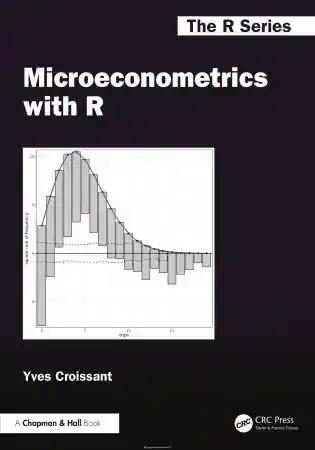
Principles of Economics, 6th Edition
- Length: 888 pages
- Edition: 6
- Language: English
- Publisher: South-Western College Pub
- Publication Date: 2011-02-10
- ISBN-10: 0538453052
- ISBN-13: 9780538453059
- Sales Rank: #134130 (See Top 100 Books)
With its clear and engaging writing style, Principles of Economics(Sixth Edition) continues to be one of the most popular books on economics available today. Mankiw emphasizes material that you are likely to find interesting about the economy (particularly if you are studying economics for the first time), including real-life scenarios, useful facts, and the many ways economic concepts play a role in the decisions you make every day.
About This Edition
Principles of Economics (Sixth Edition) became a bestseller after its introduction and continues to be the most popular and widely used text in the economics classroom. Instructors found it the perfect complement to their teaching. A text by a superb writer and economist that stressed the most important concepts without overwhelming students with an excess of detail was a formula that was quickly imitated, but has yet to be matched. The sixth edition features a strong revision of content in all thirty-six chapters. Dozens of new applications emphasize the real-world relevance of economics for today’s students through interesting news articles, realistic case studies, and engaging problems. The premier ancillary package is the most extensive in the industry, using a team of instructors and preparers who have been with the project since the first edition. The text material is again fully integrated into Aplia, the best-selling online homework solution.
“I have tried to put myself in the position of someone seeing economics for the first time. My goal is to emphasize the material that students should–and do–find interesting about the study of the economy.” – N. Gregory Mankiw
New Features
- The new, sixth edition of Principles of Economics contains extensively updated coverage of areas impacted by the financial crisis.
- The sixth edition will be available with the most advanced new products for student and instructor choice, engagement, and outcomes.
- New “Problems and Applications” appear throughout the sixth edition, providing an effective, integrated way for students to assess their mastery of the material and to review more efficiently for assignments and exams.
Additional Features
- Created by economist Ron Cronovich of Carthage College, Premium PowerPoint® Presentations feature chapter-by-chapter slides designed to ease educators’ course preparation time while increasing student involvement in the classroom. The presentations organize lecture points into sections that students can easily digest, animate graphs the way instructors might draw them, and include “Student Note Prompt” handouts to facilitate effective note taking without distracting students from active participation in class.
- “In the News” boxes include excerpts from many newspaper articles and encourage students to apply basic economic theory to discover how economics can provide an illuminating new perspective and enable greater understanding of world events.
- “FYI” boxes provide additional material to expand key concepts and discussions by offering a glimpse into the history of economic thought, clarifying technical issues, and exploring supplementary topics you might choose to complement your core lectures.
- Economic theory is most useful and interesting when applied to actual events and policies, which is why the text contains numerous Case Studies to vividly illustrate the real-world applications and consequences of key principles.
- “Quick Quizzes” follow each major section to help students check their comprehension of what they just learned and to focus their review when preparing for exams.
- Each chapter contains a variety of problems and applications that encourage students to apply the material they have learned. These practical, interesting activities serve equally well as homework assignments and starting points for lively classroom discussions.
Table of Contents
Part I: Introduction
Chapter 1: Ten Principles of Economics
Chapter 2: Thinking Like an Economist
Chapter 3: Interdependence and the Gains from Trade
Part II: How Markets Work
Chapter 4: The Market Forces of Supply and Demand
Chapter 5: Elasticity and Its Application
Chapter 6: Supply, Demand, and Government Policies
Part III: Markets and Welfare
Chapter 7: Consumers, Producers, and the Efficiency of Markets
Chapter 8: Application: The Costs of Taxation
Chapter 9: Application: International Trade
Part IV: The Economicsof the Public Sector
Chapter 10: Externalities
Chapter 11: Public Goods and Common Resources
Chapter 12: The Design of the Tax System
Part V: Firm Behavior and the Organization of Industry
Chapter 13: The Costs of Production
Chapter 14: Firms in Competitive Markets
Chapter 15: Monopoly
Chapter 16: Monopolistic Competition
Chapter 17: Oligopoly
Part VI: The Economics of Labor Markets
Chapter 18: The Markets for the Factors of Production
Chapter 19: Earnings and Discrimination
Chapter 20: Income Inequality and Poverty
Part VII: Topics for Further Study
Chapter 21: The Theory of Consumer Choice
Chapter 22: Frontiers of Microeconomics
Part VIII: The Data of Macroeconomics
Chapter 23: Measuring a Nation’s Income
Chapter 24: Measuring the Cost of Living
Part IX: The Real Economyin the Long Run
Chapter 25: Production and Growth
Chapter 26: Saving, Investment, and the Financial System
Chapter 27: The Basic Tools of Finance
Chapter 28: Unemployment
Part X: Money and Prices in the Long Run
Chapter 29: The Monetary System
Chapter 30: Money Growth and Inflation
Part XI: The Macroeconomics of Open Economies
Chapter 31: Open-Economy Macroeconomics: Basic Concepts
Chapter 32: A Macroeconomic Theory of the Open Economy
Part XII: Short-Run Economic Fluctuations
Chapter 33: Aggregate Demand and Aggregate Supply
Chapter 34: The Influence of Monetary and Fiscal Policy on Aggregate Demand
Chapter 35: The Short-Run Trade-off between Inflation and Unemployment
Part XIII: Final Thoughts
Chapter 36: Six Debates over Macroeconomic Policy







